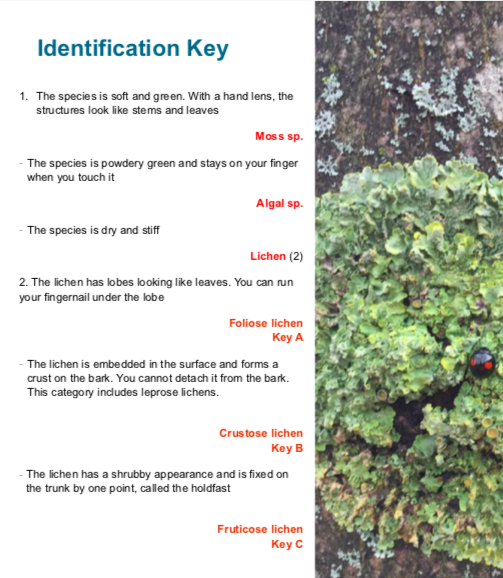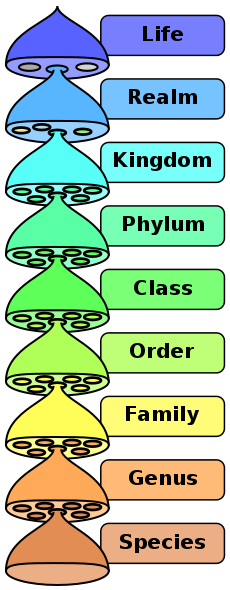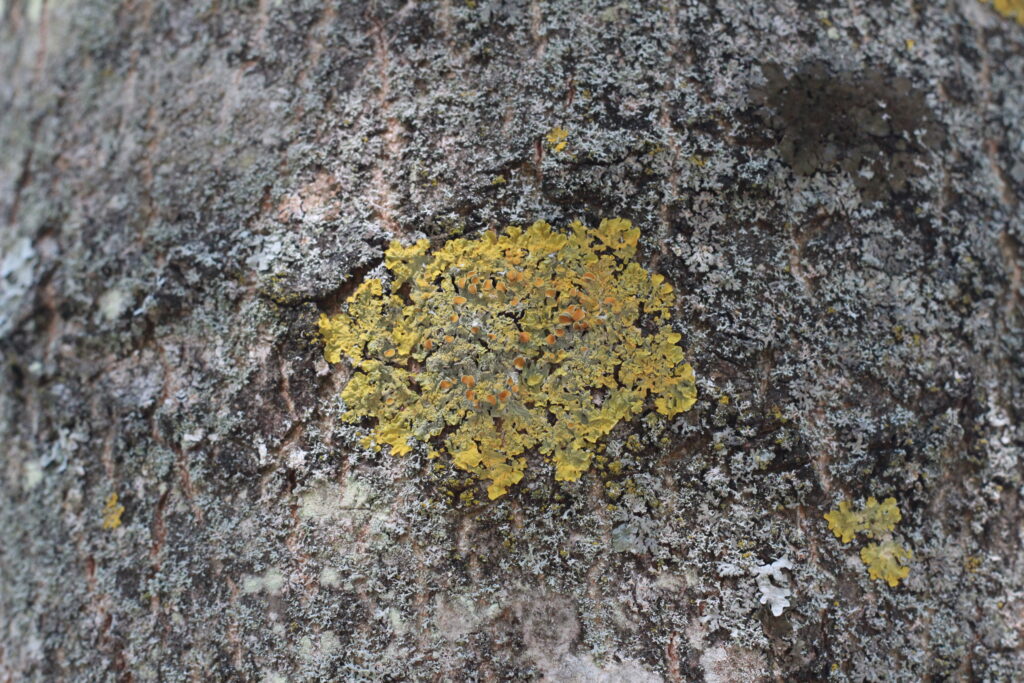The identification of lichens
This is the audio (below) for this halt. The text below is a transcription of the audio! The audios do not contain all the content written in the text to keep the audios engaging. If you want to have more details, check out the text. Enjoy!
To identify lichens, two criteria are important:
- The forms of the lichen (foliose, crustose, fruticose, leprose, see here for more info)
- The reproduction methods
Other details are important such as the colour of the lower surface of the lichen, the type of rhizines (which are the attachments that allow the lichen to hold onto the surface). The rhizines can be single or double (among others). To be able to identify lichen species, we use an identification key.
What is an identification key?
It is a tool that allows you to identify a living species (animal or plant). The key (document) contains a series of questions that allow you to find the name of the organism in front of you, based on observable morphological features. Below is an example of some questions found in an identification key. I will refer to an identification key as ID key in this text. A full ID key that I created based on the urban lichens I found in Edinburgh and in Brussels can be found here.

How does an ID key work?
In an ID key, you read the first statement. If it matches (one of) the morphological traits you see on the organism you are trying to identify, you continue on to the next statement referred to with a number. You continue following the numbered statements until you find the name of the lichen (or other organism) you are trying to identify.
What is taxonomy ? How do you name a species ?
Taxonomy is a way of naming and recognising species. It is a similar process to naming humans with their first name and their last name. For example, your family name indicates the larger family to which you belong, and the first name represents your individuality within that family.
Remember the species we saw: Xanthoria parietina, Physcia adscendens, Candelariella reflexa. In general, the first part of the name is the genus (like the family name for humans), indicating the family to which the individual under study belongs. Then, parietina, the second part of the word indicates the species. This is more unique – like your first name.
Before 1753 (in the early 18ᵉ century), plants were differentiated based on a description. For humans that would be like saying: “the person with a pointy nose”.
What’s wrong with this kind of description?
It is too long and complicated to use in everyday life.
In 1753, Linnaeus started to use (Latin) names to differentiate plants… which is much easier. There are several taxonomic ranks, which are classifications ranging from broader families to the most precise (the species name).
Here is an example of the different ranks of life:
Kingdom > Division/Phylum/Branch > Class > Order > Family > Genus > Species

For example for Xanthoria parietina (the lichen just below), its taxonomy would be:

Fungus > Ascomycete > Lecanoromycetes > Teloschistales > Teloschistaceae > Xanthoria > parietina
As you can see, these are mainly Latin words.
Now that you know some common species in the urban ecosystem, you will be able to identify them when you walk down the street! How fun is it to greet other organisms!?
Feedback
If you don’t continue the ride, can you give us feedback on your experience here ? It will help us improve!
Thank you very much !



I’d recommend Mortonhall Cemetery and Crematorium Grounds and Craigmillar Castle Park Cemetery as two excellent sites in Edinburgh for lichens.
Hello Juliet! Thank you very much for this comment. I will think about these two places and could add those as part of the walk as well… If you have any pictures of lichens or anything that you would like to share and add to the website that you think would add, feel free to contact me on my email address. Best 🙂